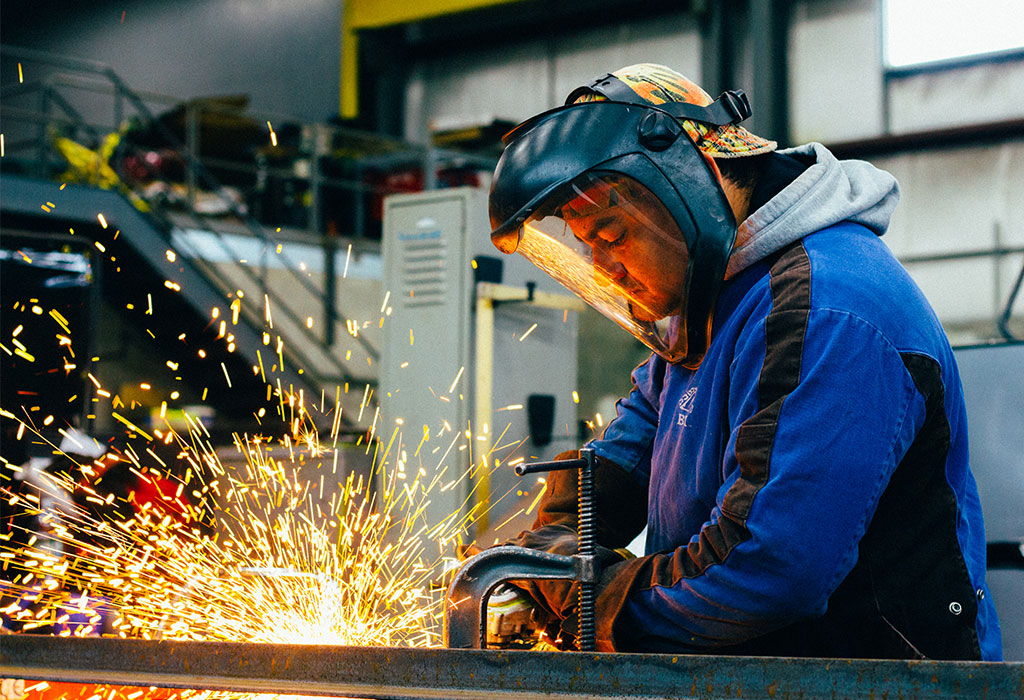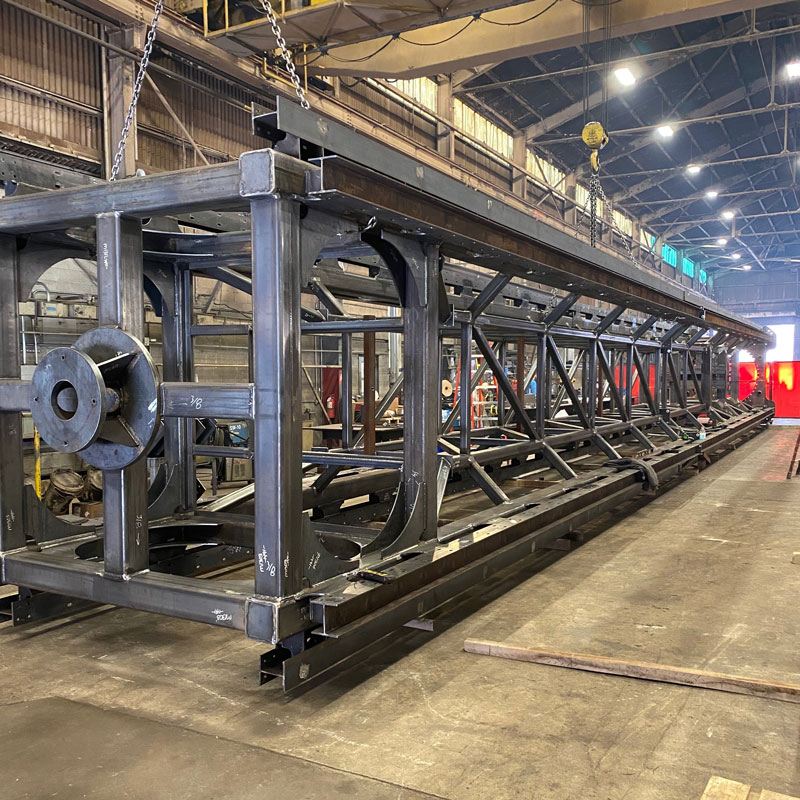Innovative Trends in Steel Construction: Enhancing Resilience and Accuracy
In the realm of steel fabrication, the search of longevity and precision has led to a wave of ingenious trends that are reshaping the sector. From advancements in welding technologies to the combination of robot automation in construction procedures, the landscape of steel production is advancing rapidly. High-strength alloy advancement, coupled with the application of 3D modeling and simulation software application, is pushing the limits of what is achievable in regards to architectural honesty and accuracy. Moreover, the growing emphasis on lasting techniques in steel manufacturing is not just driving effectiveness yet likewise fostering an extra environmentally conscious strategy to fabrication. These trends are not simply forming today but additionally laying the groundwork for the future of steel construction, assuring more enhancements in toughness and accuracy.
Advanced Welding Technologies
In the world of steel fabrication, the fostering of innovative welding innovations has considerably revolutionized the market's strategy to achieving remarkable high quality and accuracy in structural welds. Advanced welding technologies, such as laser light beam welding and rubbing mix welding, have actually emerged as game-changers in the field. By leveraging these sophisticated welding strategies, steel producers can boost the toughness, stamina, and accuracy of their architectural welds, satisfying the progressively requiring needs of modern construction projects.
Robot Automation in Fabrication
Welcoming robot automation has become a keystone of modern steel fabrication practices, improving and enhancing procedures effectiveness across the sector. Robots are revolutionizing the way steel elements are produced, supplying unmatched precision and speed while reducing human mistake. These automated systems can handle repeated jobs with consistent precision, causing better final result.
One key benefit of robotic automation in steel manufacture is the capability to work all the time without tiredness, significantly raising production output. This continuous procedure reduces downtime and accelerates project timelines, ultimately conserving expenses for suppliers. Furthermore, robots can be set to execute detailed tasks that may be difficult or harmful for human workers, boosting safety in the work environment.
Moreover, robotic automation makes it possible for seamless combination with various other electronic innovations, such as computer-aided style (CAD) software program and Net of Points (IoT) systems (metal fabrication melbourne). This interconnected approach boosts interaction in between various phases of fabrication, enhancing process and ensuring real-time surveillance and control. As the steel construction sector continues to evolve, robot automation stands apart as a transformative pressure driving effectiveness and accuracy in manufacturing processes

High-Strength Alloy Advancement
The innovation of high-strength alloy growth in steel manufacture is improving the industry's technique to improving material toughness and performance. High-strength alloys are engineered to show exceptional mechanical properties, such as enhanced tensile stamina, sturdiness, and deterioration resistance compared to traditional steel grades. By integrating these innovative alloys right into construction procedures, suppliers can produce elements that endure greater tension degrees and rough atmospheres, causing even more durable and trustworthy final result.
One secret advantage of high-strength alloy advancement is the capacity to decrease material density without endangering structural stability. This not just causes lighter-weight parts but also adds to cost savings and improved efficiency in fabrication and assembly processes. Additionally, the improved strength-to-weight proportion of these alloys allows for the design and construction of structures with higher load-bearing abilities while reducing general weight.
3D Modeling and Simulation Software Application
Developments in steel manufacture processes have actually been considerably thrust by the assimilation of sophisticated 3D modeling and simulation software devices. These devices enable makers to create thorough online models of their projects, allowing them to imagine the last product with accuracy prior to any kind of manual labor starts. By simulating various stress and anxiety aspects, ecological problems, and architectural loads, fabricators can optimize designs for improved resilience and efficiency. Furthermore, 3D modeling and simulation software application improve the production procedure by recognizing possible problems early on, reducing the need for expensive rework and minimizing product waste.

Lasting Practices in Steel Production
Including lasting practices into steel production processes is vital for decreasing ecological impact and ensuring lasting source availability. One essential sustainable technique is the adoption of energy-efficient modern technologies to lower greenhouse gas discharges during the steel manufacturing process. This consists of making use of renewable resource resources, such as solar or wind steel fabrication melbourne power, to power steel plants and applying energy-efficient devices to optimize energy usage.
One more important element of sustainable steel manufacturing is the responsible sourcing of basic materials. This involves making sure that the iron ore and various other sources utilized in steelmaking are gotten from ecologically friendly and ethical sources. By advertising openness in the supply chain and sticking to rigorous ecological requirements, steel producers can reduce the adverse influences of source removal on local environments and neighborhoods.

Final Thought
Finally, the cutting-edge trends in steel manufacture such as innovative welding modern technologies, robotic automation, high-strength alloy growth, 3D modeling and simulation software application, and sustainable techniques are improving the sturdiness and precision of steel products. These improvements are revolutionizing the steel construction industry by improving performance, high quality, and sustainability. It is clear that the future of steel fabrication depends on welcoming these sophisticated innovations to fulfill the demands of modern construction and production sectors.
In the world of steel construction, the pursuit of resilience and precision has actually led to a wave of innovative trends that are improving the industry.In the realm of steel construction, the adoption of advanced welding modern technologies has actually dramatically transformed the market's technique to attaining premium high quality and accuracy in architectural welds. As the steel manufacture market proceeds to develop, robot automation stands out as a transformative force driving performance and accuracy in manufacturing procedures.
Moreover, reusing and reusing steel scrap and waste materials play a considerable role in enhancing the sustainability of steel production. Alpha reo.In conclusion, the innovative trends in steel manufacture such as sophisticated welding technologies, robotic automation, high-strength alloy development, 3D modeling resource and simulation software program, and sustainable methods are enhancing the sturdiness and accuracy of steel products